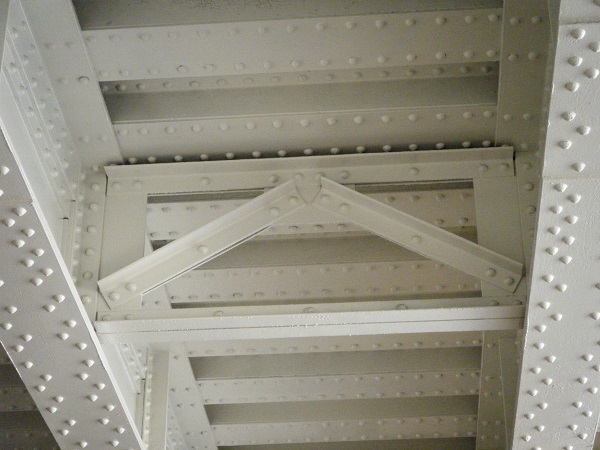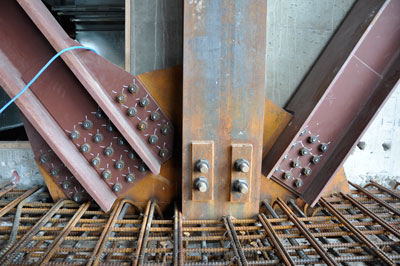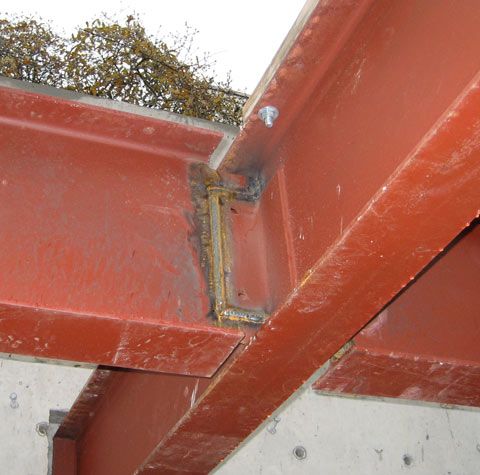Structural Connections
Table of Contents
Introduction
In order to join members such as columns and beams together, a secure connection at the joint of the structure is needed to ensure the structure remains stable. These structural connections are typically made by riveting, bolting, or welding.
Riveted Connections
A rivet is very similar in function to a nail, with a rivet having a head and a ductile shank as seen below. Installing a rivet requires pre-heating of the rivet and the application of pneumatic pressure to secure the rivet so it becomes "driven". This process has many disadvantages compared to bolted and welded connections, primarily from the extra energy input and fire risk due to the pre-heating of rivets, high levels of noise during installation, and difficulty in replacing rivets during maintenance. Riveted connections were traditionally the primary option for structural connections in the past, however due to the aforementioned shortcomings they are seldom used these days [1].
| Rivet Connections [1] | Diagram of a Manufactured Rivet and a Driven Rivet [2] |
|---|---|
Bolted Connections
Bolted connections are most commonly used today over riveted connections due to their lower installation costs and ease of installation and maintenance. The main disadvantage of bolts is that they can loosen under vibratory loads, which causes a reduction in strength. The two types of bolts commonly used in steel construction are high strength structural steel bolts (A325 and A490 bolts) and common bolts (A307 bolts) [1].
| Bolted Connections [3] | Diagram of a Bolted Joint [4] |
|---|---|
Welded Connections
Welded connections are made using a welding machine, to melt material and join members together. These types of connections benefit from being simple in design and requiring little material and parts. However, welds shrink over time meaning they can be unsuitable for larger connections. Additionally, welds are more costly to inspect and maintain, with the quality of the initial weld being dependent on the welder and not to a guaranteed industry standard like ASTM [1].
| Welded Connection [1] |
|---|
Contributors:
| User | Last Update |
|---|




